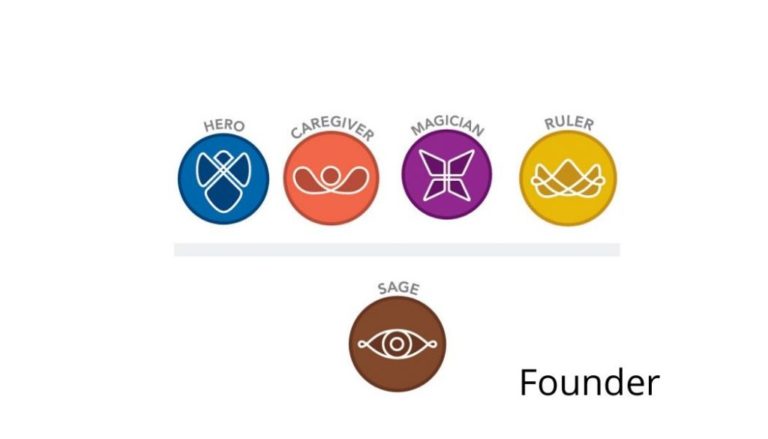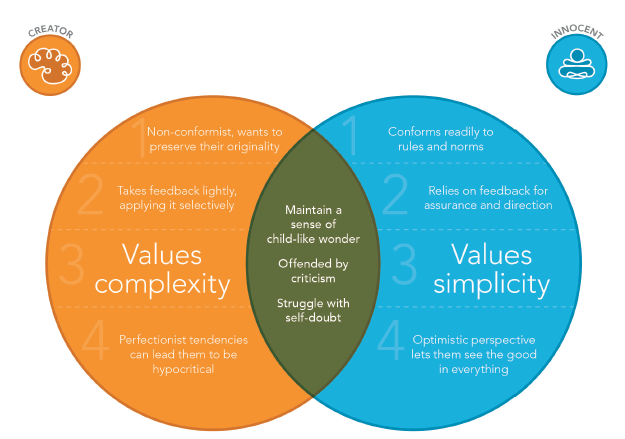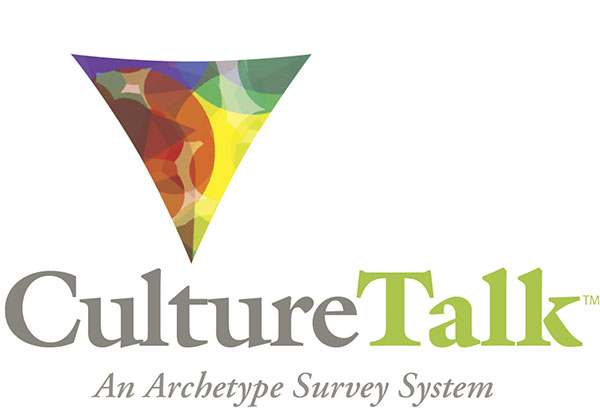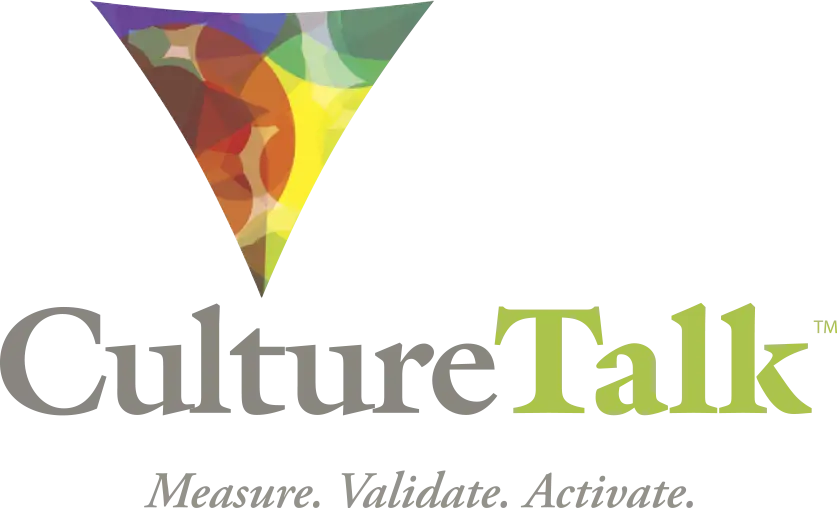A Cautionary Tale on Leadership and Culture
- February 26, 2020
- 3:09 pm
- Theresa Agresta
Looking at Leadership Transition through the Lens of Archetypes
Human beings have a lot to say about hindsight.
For example: “Hindsight is always 20/20.” (Billy Widler, Director and Screenwriter) Or “In hindsight, maybe we would have done things differently.” (Bob Tudor, musical prodigy)
Foresight is the opposite of hindsight. It can be defined as ‘the action of predicting what will happen or be needed in the future.’
The 12 Archetype framework we use to understand human and organizational behavior is an excellent tool that can be applied in hindsight or with foresight. That’s because Archetypes are simple storylines that follow patterns of human behavior. When we understand which storylines are dominant in an individual or an organizational culture – we can predict (foresight) or interpret (hindsight) decisions, actions, tensions and conflicts.
I titled this piece ‘A Cautionary Tale’ because, while the opportunity existed to use foresight, unfortunately, hindsight led the day. We were working with a client that was in the midst of a leadership transition. Because I already knew the primary Archetypes of the organizational culture and the people involved, I could see conflicts as they were brewing. While I tried to raise the red flag and design an intervention, our client was not ready to engage, and we were left on the sidelines to let the drama play out.
You may know people with similar personalities to the characters that follow, or the scene may reflect themes you’ve encountered in your own workplace culture experiences. Perhaps after reading it, you might lead to different results.
Our tale begins at the offices of a law firm where we were hired to do a Culture Audit. The firm had just celebrated 20 years in business, enjoyed a solid reputation in its key markets and was looking to align its team around strategies for growth.
A Right Hand
Around the same time, the founding partner of the firm had identified an individual who was coming up through the ranks and would become her right hand. While there were differences in the way the founder and her right hand led, together, they were successful in optimizing the organizational culture.
Both leaders had also taken their Culture Archetype assessment. As an outside consultant working with this organization, I was cautious about how the eventual leadership transition might play out, given clearly different styles and strengths.

The founding partner was a Hero–Caregiver, and also showed up equally for Magician and Ruler. The combined strengths of these Archetypes meant she was fantastic at creating personal connections, driving business and attracting people to the firm. Her Magician had big vision and big ideas, but her Ruler kept things in check, and enabled her to create the structure needed for continued growth. The founder’s latent Archetype (her lowest scoring) was the Sage, so she tended to be less focused on facts and details that might cloud her big ideas.
Her right hand shared some of her personality traits, but also demonstrated traits that were very different. Both individuals articulated the Hero Archetype – they both had the drive to deliver wins for their clients. The founding partner saw this external focus on delivery as the key to leadership success.

But the two leaders had very different strategies when it came to team development and being the face of the firm. The founder spoke strongly and with conviction; the team relied on her for structure and stability. The right hand’s supporting Explorer and Innocent Archetypes tended to be more accommodating or hands-off. His latent pattern was Revolutionary, further confirming that he was not one to rock the boat or be comfortable with bold change.
An Emerging Leader
Several years later, as the founder began to phase out, the right hand stepped in as the Managing Partner and the succession planning cycle began anew: the new Managing Partner began to look for a leader he could bring up underneath him. He immediately identified a potential partner in a young woman. She had been working on the team for a while but brought a very different energy to the firm.

Playing to the strengths of her high Creator Archetype, she took ownership of completely redoing the firm’s website down to every last creative detail. It took a year to launch, but she made sure everything was perfect, which did up-level external perceptions. She did the same thing with the entire office design and also pushed client work to new levels of excellence. The new Managing Partner was wowed by this energy and worked to support and encourage it.
But the Managing Partner did not focus on her Creator shadow traits. These started to show up in a controlling and judgmental way through criticism of others’ efforts and a need to micro-manage details and have the last word on internal and external projects. I remember being in meetings with this emerging leader. She did nothing to hide her frequent disagreement with the ideas of others; her face told all and it could be painful to be at the table with her. But the Managing Partner had already invited her to rise up to partnership.
The tension between the Managing Partner’s Innocent and the emerging leader’s Creator went unresolved. He was challenged to call her out on behavior that undermined the group.

Enter the Revolutionary
And then another person entered the drama. A strong new hire stepped into a department where a low-key Sage leader, another firm partner, had been in place for years.

This new person – with his high Revolutionary started to shake things up. He questioned everything and began to rally others around discontent, eventually turning them against the long-standing, yet slow to act department leader. This got the attention of our Creator who was attracted to the energy of change and innovation. They became allies.
Primed to remain optimistic and be fair to all, the Managing Partner struggled to reign the pair in. He was so out of his comfort zone by their combined big energy and display of strength that he made the challenging decision to fire his long-standing department head and allowed the Revolutionary to take over.
And the damage continued as the revolt gained traction, disrupting the long-held values of the larger team of 100+ people at the firm who are grounded in the firm’s culture of the Hero-Sage-Caregiver. The two up-and-comers had effectively turned the firm on its head.
Unintended Consequences
Fast-forward two years. The conflicts had grown into a chasm that couldn’t be crossed. The Managing Partner finally said, ‘Enough’ – and fired the Revolutionary upstart. Outraged, the Creator also left and joined forces with the Revolutionary to start a new firm. The pair took a number of employees and important clients with them.
The company went through a very tumultuous experience that had ripple effects throughout the organization. The Managing Partner was left to pick up the pieces. It was a painful, costly lesson learned only in hindsight.
This story didn’t need to end this way.
Succession planning is an ongoing process, especially in law firms and other professional service companies. Founders understand the need to develop next-generation leaders underneath them so that there is a progression of qualified professionals prepared to purchase shares and run the firm, allowing current leaders to retire and the business to continue.
Succession planning is also a common struggle. We’ve often seen new partners identified because they are exceptional at delivering results for clients and they appear qualified to take the reins of firm leadership. But to make a successful transition, new partners need to become leaders of people.
The moral of the story: the behaviors of leaders have outsized impact on the culture of an organization. Leadership transitions are a critical juncture and need to be handled with foresight into the individual personalities of those involved.
The point is not that people with high Explorer or Innocent Archetypes can’t lead. It’s about coaching them to understand where these patterns may tend to back away from challenges and developing new strengths before problems arise.
The point is also not that Creators and Revolutionaries will combine to stir up trouble. Rather, that guiding people to understand and manage the shadow expressions of these storylines can allow teams to capitalize on the positive renewal and change they promise while avoiding potential negative consequences.
Leadership development and workplace culture are inextricably intertwined.
One of the greatest gifts of the Archetype framework is helping individuals and groups become aware of both their strengths and their potential pitfalls and conflicts, using these insights with foresight to drive toward more positive outcomes.
Want to learn how to apply Archetype story patterns to your leadership & team challenges and your culture & brand strategies?







